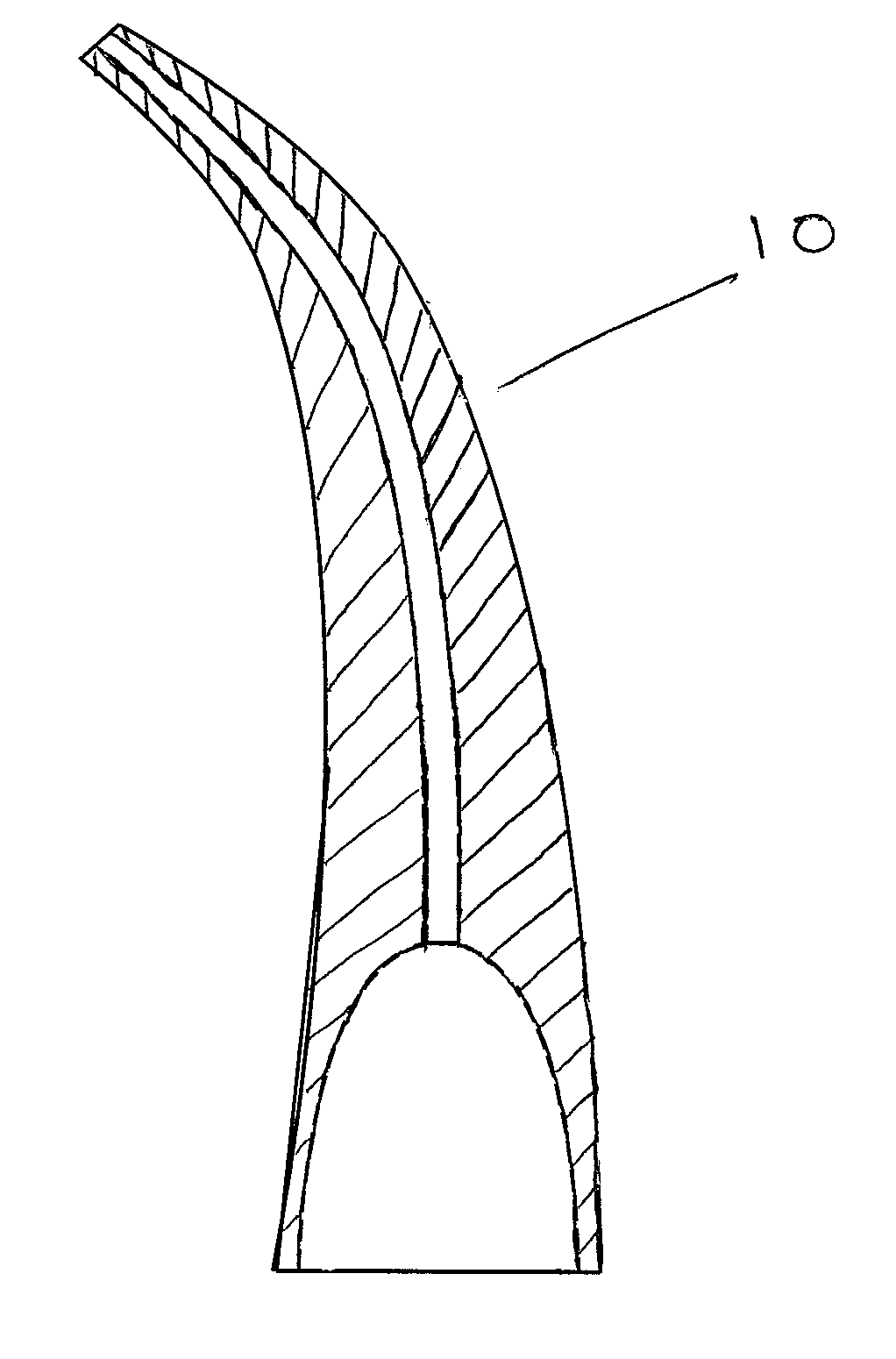Fishing lure
a technology of artificial fishing and lures, which is applied in the field of artificial fishing lure components, can solve the problems of increasing the force with which the angler is reeled, the look and feel of the sinker itself providing a significant drawback in the prior art, and the rig will be more easily moved through, so as to achieve the effect of facilitating the configuration of a carolina rig, reducing the risk of bite, and increasing the tendency to keep the lure in the mouth longer
- Summary
- Abstract
- Description
- Claims
- Application Information
AI Technical Summary
Benefits of technology
Problems solved by technology
Method used
Image
Examples
Embodiment Construction
[0031]Referring to FIG. 1, an artificial fishing lure device is shown and is generally designated by numeral 10. In the preferred embodiment, the primary component of the device is composed of a soft, flexible plastic material similar to that presently used in the composition of artificial worm bait, such as plastisol alone or in combination with hardeners or softeners as known in the art. However, the device may be composed of other similar materials as known in the art, the primary objective being a resilient component that is extremely soft and flexible.
[0032]As seen in FIG. 1, device (10) is of general elongated, conical shape. Extending throughout elongate device (10) is aperture (12). Aperture (12), as previously stated, may be sized for either a snug or slip fit on various sizes of monofilament as is needed or desired for a particular application. However, regardless of the exact respective sizes of elongated device (10) and aperture (12), the material at the nose end (14) of...
PUM
 Login to View More
Login to View More Abstract
Description
Claims
Application Information
 Login to View More
Login to View More - R&D
- Intellectual Property
- Life Sciences
- Materials
- Tech Scout
- Unparalleled Data Quality
- Higher Quality Content
- 60% Fewer Hallucinations
Browse by: Latest US Patents, China's latest patents, Technical Efficacy Thesaurus, Application Domain, Technology Topic, Popular Technical Reports.
© 2025 PatSnap. All rights reserved.Legal|Privacy policy|Modern Slavery Act Transparency Statement|Sitemap|About US| Contact US: help@patsnap.com



